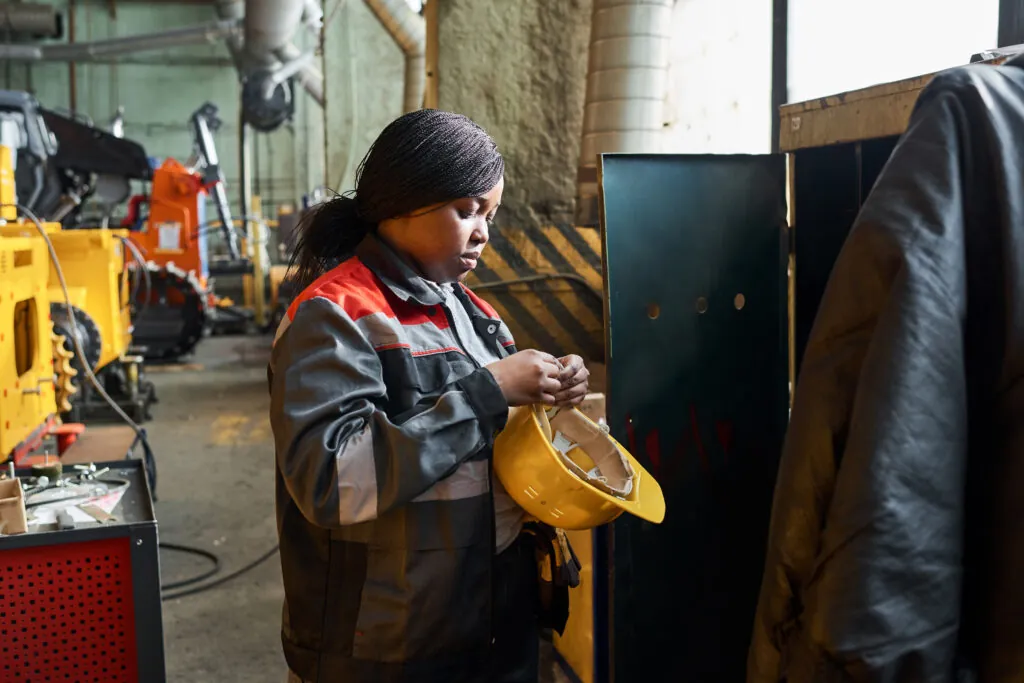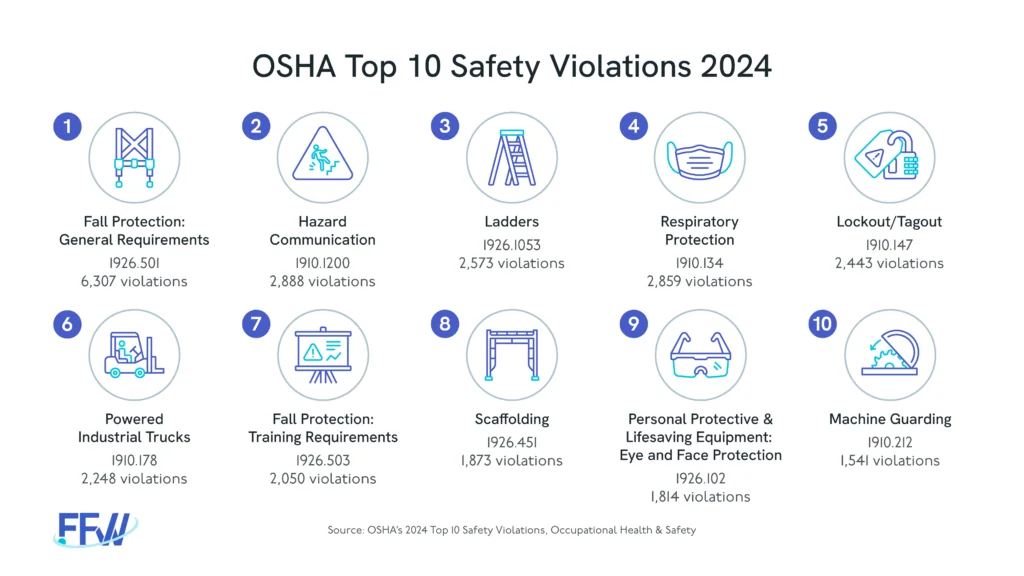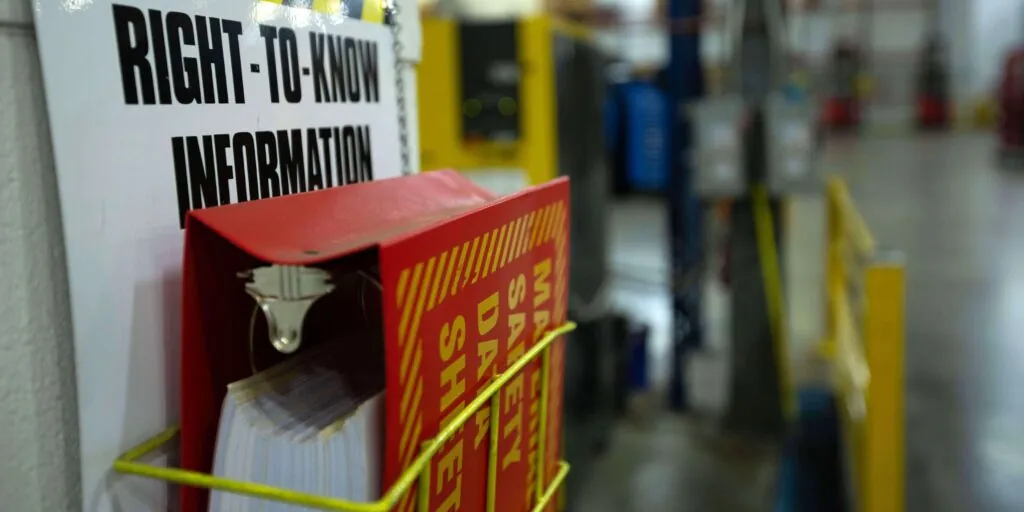By Monica Steinborn
Injury Prevention, Safety, and Ergonomics Specialist, Fit For Work
Did you know that women comprise 34% of the warehousing and logistics workforce and nearly 30% of the manufacturing workforce?
Women’s representation continues to grow in these fields as well as mining (16%) and construction (11%). However, most personal protective equipment (PPE) used to guard against workplace hazards is designed and sized for men. This includes items like fall protection gear, flame-resistant jumpsuits, safety footwear, gloves, hard hats, and high-visibility vests. The resulting improper fit increases the risk of injury while impeding job performance.
Here, we’ll examine the pain points for employees, the challenges faced by organizations, and the solutions that can meet these needs.
How Improper PPE Impacts Safety and Performance
In one survey of females in construction, 67% reported that PPE, such as safety harnesses and hard hats, was not readily available in women’s sizes, while 85% couldn’t access maternity-friendly safety equipment.
One NIOSH study participant said, “They gave me a welding leather jacket that was a foot longer than my hand. And gloves (so) humongous I couldn’t even pick anything up.”
Poorly fitting PPE presents a daily issue for female employees, leading to a potential lack of safety compliance, as well as risk of injury. Workers who refuse to wear gloves because of improper fit increases the risk of exposure to heat, cold, or chemicals. Additionally, many try to pad overly large steel-toed boots with insoles and socks, which heightens the risk of tripping or falling. Another potential issue involving protective equipment has been observed with high-visibility vests that are too big, allowing them to get caught on doorknobs or handles.
Consider a food processing operator whose loose-fitting protective smock can become caught in machinery, resulting in a recordable injury. Or a worker wearing a flame-retardant jumper where even the smallest size available is too long in the arms and legs but too small in the chest and hips. The poor fit increases the risk of tripping, causes discomfort, and restricts movement.
Another scenario that plays out all too often: female road construction workers wearing helmets that don’t fit properly with baggy PPE slipping off their shoulders. All these situations can lead to constant aggravation, safety risks, and job dissatisfaction.
PPE Challenges Add Risk for Organizations
Managers also face challenges related to PPE, as they strive to establish and enforce regulatory-compliant safety rules while providing cost-effective equipment that does not compromise employees’ ability to perform their jobs effectively. Companies invest heavily in safety to help employees stay compliant and avoid injury. They also work to control the costs of lost time injuries and workers’ compensation claims.
Organizations bear financial and regulatory responsibility for providing PPE that serves its function in protecting all workers from injury while not impeding performance.
Regulatory agencies are pushing the issue. For example, a new OSHA final rule took effect on January 11, 2025, requiring PPE to properly fit each worker in the construction industry. The OSHA press release noted, “Improperly sized PPE can be ineffective in protecting workers; create new hazards for the worker, such as oversized gloves or protective clothing being caught in machinery; and discourage use because of discomfort or poor fit. The matter has been a long-standing industry safety concern, particularly among some women as well as among physically smaller or larger workers.”
To understand what inclusive, well-designed PPE looks like in practice, the 2025 guidelines from The Center for Construction Research and Training highlight key requirements that support a better fit for all workers, including women.
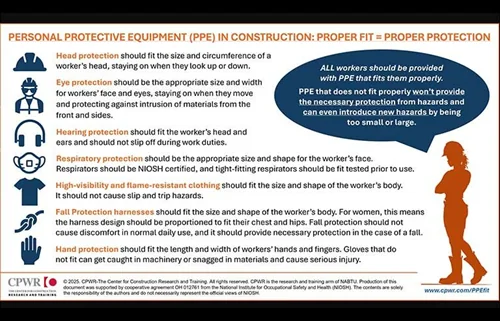
ANSI/ISEA and other standards organizations are also beginning to seriously consider issues related to gender and size diversity. Clearly, industries need access to PPE that accommodates women in their workforce, complies with safety guidelines, and supports company goals for injury prevention.
A Safer Workplace Begins with Smarter Gear
Today’s lineup of protective equipment goes beyond traditional “eyes, ears, and toes” to safeguard employees from injury. Below are the key areas of concern and ways to ensure a proper fit for female workers.
Fall Protection – Devices such as harnesses and safety gear often have chest straps that horizontally cross the breast line and buckle in front, causing ergonomic and safety issues for women. These straps can cause unhealthy pressure and pain for a woman’s build, along with improper load distribution in case of a fall.
Be advised that female workers might be reluctant to ask for assistance in this area. Supervisors need training to build awareness around these special workforce needs, as you don’t want to ignore genuine safety concerns. When evaluating fall protection equipment, it’s a good idea to include female team members in the process to advocate for the unique needs of women.
Ask your providers for female-specific models as a solution. Look for devices with contoured shoulder straps, adjustable straps that sit high or low on the chest, along with padding and ergonomic support. If none are available, proper adjustment of harnesses or gear may help. We recommend personalized fitting for each employee with labeling for that worker’s item, rather than interchangeable gear that each user must refit. Inclusive PPE policies will accommodate all body types and allow workers to request proper fitting without a negative stigma.
Safety Footwear – Women face challenges with steel-toed shoes and boots in terms of proper fit and comfort, which can impact safety and job performance. Many brands start sizing at men’s 6 (women’s ~7.5-8), excluding women with smaller feet; even when smaller sizes are available, availability is often limited. Unisex sizing often leads to a poor fit, as men’s and women’s feet are shaped differently, with dissimilar ankle positioning, which requires unique footwear designs. Women typically need a narrower toe box, higher arch, and narrower heel than men’s footwear provides.
An improper fit can lead to heel slippage, instability, blisters, cramped toes, and arch fatigue, all of which can impede job performance. Wearing oversized shoes or boots stuffed with socks can increase the risk of tripping or falling, as they provide inadequate protection in the event of impact. Toe cap misalignment can lead to crushed toes or other injuries, while poorly fitted boots can cause back pain, joint strain, or plantar fasciitis over time. Discomfort can also lead to noncompliance as employees loosen laces or modify their footwear to find relief from pain.
“When safety gear doesn’t fit, it isn’t safe. Women deserve PPE that protects and fits – not shrunk-down men’s gear.” – Occupational safety advocate
We encourage proper fit testing for safety footwear, as we do for other PPE. Prioritize ANSI/ASTM/CSA footwear compliance, then look for options that also provide comfort and support. To ensure all-day support and protection, safety shoes should fit comfortably, not loosely, and not feel heavy or cumbersome.
Some companies now partner with shoe stores or footwear providers, offering annual financial allowances for footwear that meets the company’s standards while allowing employees to choose the best fit. Emerging technologies include 3D foot measurement scanning and gait tests to ensure a proper fit and special lacing techniques that can relieve pressure.
Keep in mind that women workers may require more styles to choose from, depending on their specific job roles. For example, a team member with front-office customer contact may need to dress differently than an employee on the manufacturing floor, involving different safety footwear. It’s a good idea to include women in PPE procurement decisions to ensure the selection of appropriate products and resources while maintaining compliance.
Hard Hats – A poor fit for women can lead to comfort and safety issues, as hard hats may be too large or sit improperly on smaller heads. If adjustment bands do not effectively secure a hat, the result is instability. Pressure points caused by an improper fit on the forehead or temple can lead to headaches. Holding the head stiff to keep the hat in position can also cause neck and shoulder strain or pain.
Many hard hat designs do not consider hair requirements, such as buns, braids, ponytails, or cultural headwear, leading to improper fit and the potential for dislodgement during work. Keeping a loose hard hat in place can even lead to distraction on the job, increasing the risk of injury.
Ergonomic, self-adjusting, or bicycle-styled hard hats can offer comfort plus protection, with flexibility to accommodate women’s needs for size and fit. We recommend including women team members when selecting new headgear and providing employee training on the proper fit of PPE to ensure compliance and safety.
High-Visibility Vests – Most employers stock male-oriented or unisex options for visibility gear. Poor fit, one-size-fits-most, or large/medium/small sizing can result in safety concerns for female team members. Improper sizing can lead to ergonomic and safety issues, including reduced mobility, slower response times, and vests slipping off or catching on machinery.
Morale can also be an issue. Imagine if you required male team members to wear female attire in the workplace. With today’s recognition of the importance of a positive attitude, employee respect, and mental health support, it seems reasonable and essential to accommodate female needs for PPE.
We recommend including gender-based PPE fit in safety policies and audits, as well as seeking providers that can meet workforce needs. As always, involving representative team members in PPE selection and training can help meet your goals and accommodate all employees in safety directives.
Other PPE – Most hearing protection and eyewear can accommodate female sizing, but hand and arm protection is still an issue. These have traditionally been available in men’s sizes, with a “small” size expected to accommodate female team members. If they are too big, gloves cannot adequately protect women workers with smaller hands and wrists, as well as shorter fingers. Gloves and arm shields must fit to protect against injury from sharp objects, extreme temperatures, hazardous substances, and machinery.
Proper sizing is vital to allow for dexterity, such as picking up and grasping objects or tools, while avoiding frustration and the temptation to remove them. We recommend offering a variety of gloves that meet site-specific safety requirements while accommodating different sizing and fit needs.
Other items may include flame-retardant jumpsuits, life jackets, respiratory protection, hazardous material protection suits, or additional PPE required by your organization. Advocacy and awareness groups in construction, mining, and other industries are encouraging more diverse PPE offerings. Manufacturers and regulators are listening, fostering new options that consider gender and diversity in size.
Conclusion
As the number of women in industry is growing, companies need to ensure that PPE is designed and sized correctly. Addressing employee pain points can reduce the risk of injury, support job performance, and increase job satisfaction. At the same time, you’ll be better positioned to comply with regulatory requirements and meet safety goals while demonstrating your commitment to supporting safety for all members of your workforce.
Want to Stay Ahead of Safety Risks?
Download our 2024 OSHA Top 10 Safety Violations infographic for a quick look at the most frequently cited workplace safety issues. Use it to benchmark your own safety efforts and stay informed.
At Fit For Work, we help businesses build safer workplaces through strategic planning, targeted training, and proven risk mitigation. If you are ready to strengthen your safety program and reduce preventable injuries, contact us today.
Resources
- ANSI/ASSP Z359 – Fall Protection Code
- AS 2210.3:2019 Personal Protective Equipment – Safety Footwear
- ANSI/ISEA 107-2020 – High-Visibility Safety Standard
- ANSI/ISEA Z89.1-2014 (R2019) – Hard Hats Standard
- https://www.osha.gov/personal-protective-equipment
- https://www.cpwr.com/wp-content/uploads/PPE-Fit_November-Updates.pdf
- https://www.falltech.com/fall-protection-products/body-wear/full-body-harnesses/ft-one-fit/
- https://www.degemmill.com/product-category/shes-in-construction/womens-hard-hats-head-protection/
- https://www.redwingshoes.com/work/womens/safety-toe/
- https://www.timberland.com/en-us/c/timberland-pro/womens-workwear/work-boots-10177
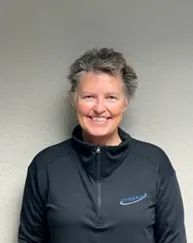
Monica Steinborn is a seasoned healthcare professional based in rural west-central Iowa. She earned her Bachelor of Science in Athletic Training from Minnesota State University, Mankato in 1993. Prior to joining Fit For Work in April 2018, Monica worked in a clinical setting and provided outreach athletic training services to area high schools.
At Fit For Work, Monica serves as an Onsite Injury Prevention Specialist, Ergo Specialist, and Safety Specialist. In each of these roles, she brings deep expertise and a strong commitment to helping others stay healthy and safe at work.
Monica is married with three adult sons. She enjoys being outdoors, walking with her three dogs, and spending time with family and friends.

